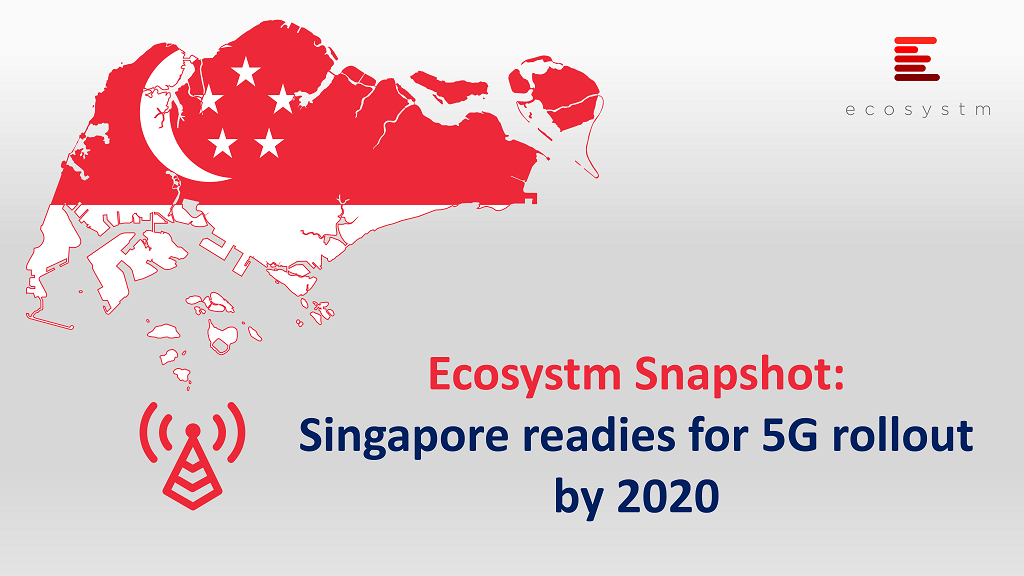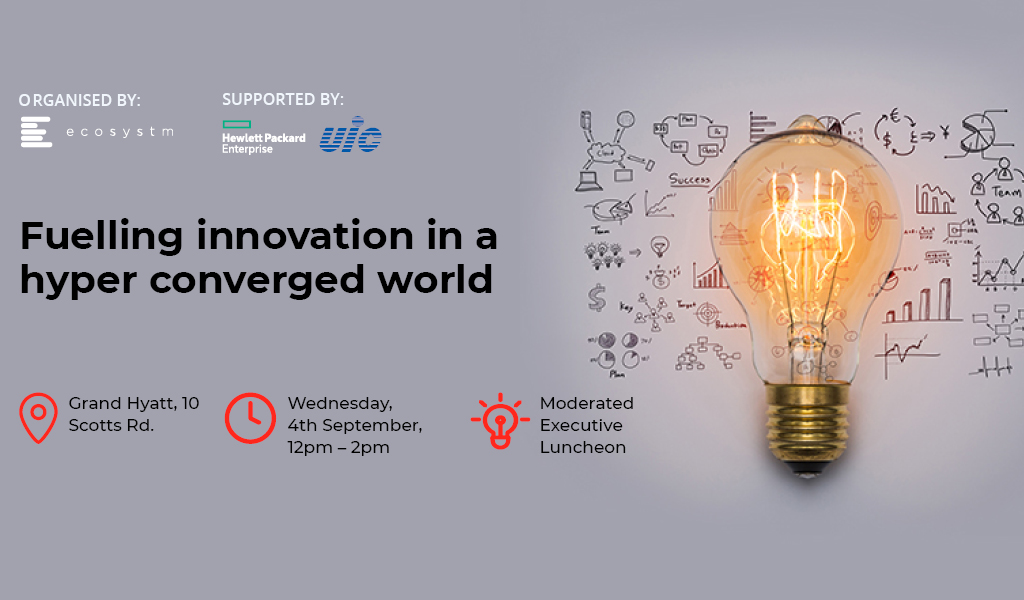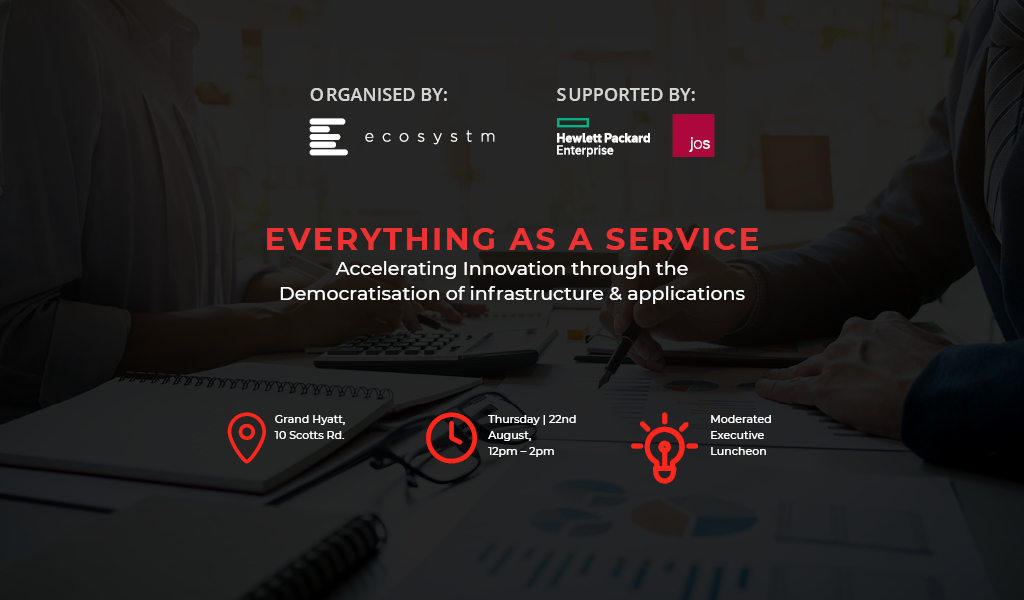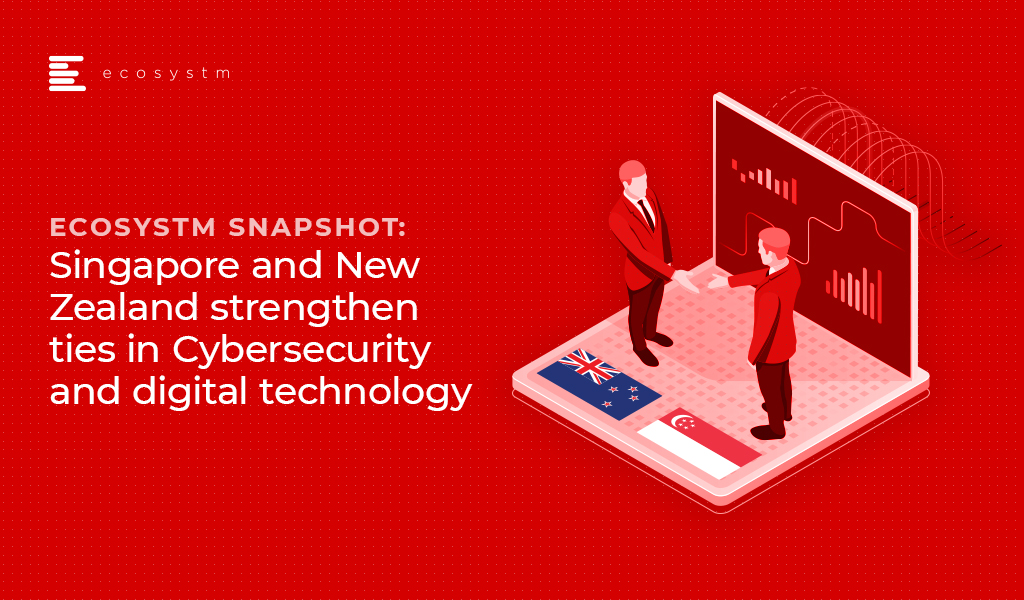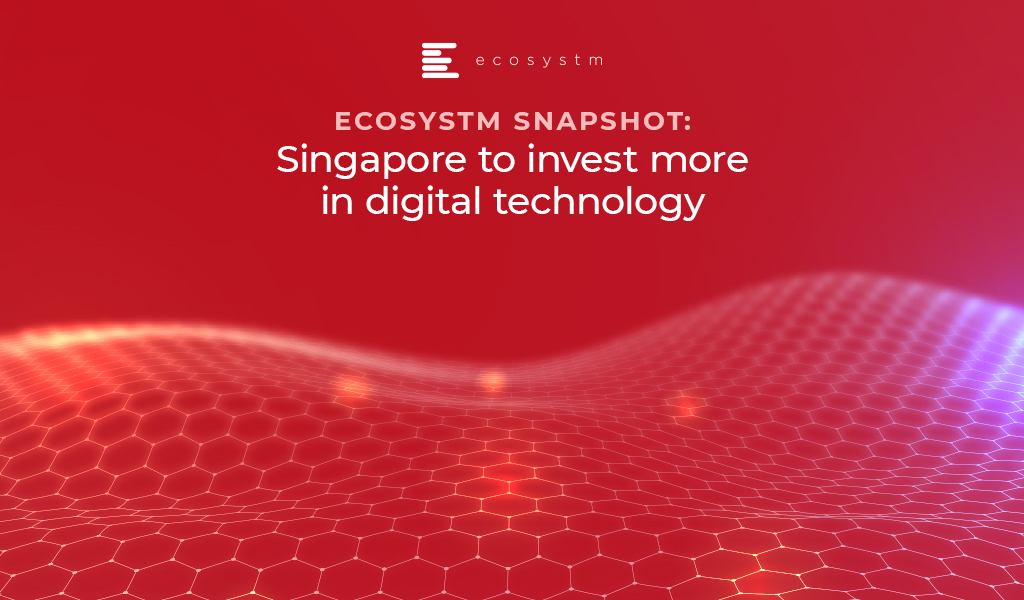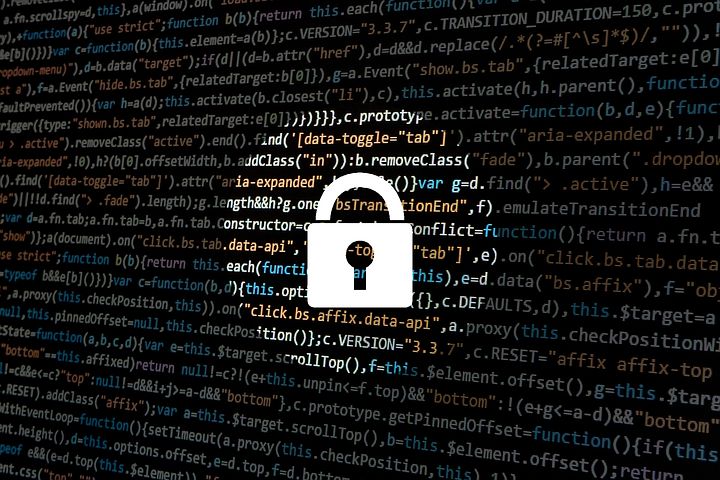Singapore’s digital economy vision where every citizen tech and business is connected by a world-class infrastructure will be empowered by the introduction of 5G in 2020. In June this year, Singapore’s telecommunication regulator, Infocomm Media Development Authority (IMDA) unveiled plans to set aside SG$40 million to build up the supporting ecosystem to fuel 5G innovation, focusing on six key verticals including smart estates, urban mobility, and maritime.
Gearing up for 5G and in order to deliver the greatest value to the economy, (IMDA) recently called for 5G proposals from Singapore’s Mobile Network Operators.
Commenting on the rollout of 5G, Ecosystm Principal Advisor – Telecommunication, Peter Wise said “5G promises much faster, more reliable wireless connectivity that will bring applications such as augmented reality, higher quality video and eventually smart cars, to life. Moreover, IoT will also be enriched by the increased data carrying capacity that 5G enables.”
Singapore pushing for four 5G networks instead of two
Instead of the two initially planned networks for 5G, there are now four networks proposed to be rolled out. Two networks will be used for full-fledged 5G networks whereas the other two will be smaller ones that will provide limited coverage. The two smaller networks of 800MHz will leverage on Millimetre Airwaves and will be used in small ports and factories and be Singapore’s most immediate use of 5G technology. “More networks would likely bring more competition and deeper coverage. The designation of some spectrum for port usage appears to enable applications to get up and running quickly and not have to wait for a wider rollout” said Wise.
The IMDA has called for proposals from the interested operators rather than going for an airwave auction. Proposals will be assessed on telcos’ financial capability, as well as network security design.
The introduction of 5G will be a costly and time-consuming activity in order to set up the infrastructure and provide customers with sufficient coverage. “Some existing 4G cell sites will be able to be upgraded to 5G through software or card swap outs, which are comparatively cheaper than acquiring and building whole new cell sites. However, over time, 5G will require a denser network of smaller cell sites, and there may need to be infrastructure sharing arrangements between MNO’s for acquiring these new sites for practical and economic reasons,” said Wise.
Only half of Singapore will have 5G coverage initially
IMDA announced that at least 50% of Singapore will be covered with a standalone 5G network by the end of 2022 and full island-wide coverage by 2025. “Many users may not initially notice whether they are on 4G or 5G speeds. 4G is still more than adequate for most of today’s applications, including video” said Wise. “However, over time as heavy data applications are introduced or very high definition video becomes more mainstream the benefits of 5G will become more apparent.”
A standalone network will use 5G-specific technologies for developing newer applications around IoT, smart factories, and autonomous vehicles. “Another fascinating development will be whether any operators use 5G to compete with fibre” said Wise. “Singapore is well served by high-speed fibre broadband so while the Singapore population is high in density (making 5G economics better), it may be that having 5G as a competitor to fixed broadband is more successful in other countries where most fixed broadband is still provided over older, slower copper-based technology.”
5G is still in the early phase of its lifecycle and is at the centre of an ongoing telco development, we are yet to see how it may become crucial to economic growth.
Fuelling innovation in a hyper converged world
The incredible pace of innovation is demanding speed and agility from IT to introduce new services in a secure and trusted manner. These demands are coming from different business functions who are all looking at the IT team to enable their business processes. IT needs to provide them the flexibility to pilot, fail, grow and prioritise these new capabilities in a rapid manner.
Hyperconvergence provides the agility and economics of cloud with the enterprise’s capabilities of the on-demand infrastructure.
EVERYTHING AS A SERVICE –
Accelerating Innovation through the Democratisation of Infrastructure & Applications
We are in a consumption economy as customers move towards paying as they use a product rather than owning it themselves. How can IT teams support businesses in transitioning to this new business model?
More importantly, how can IT leverage this model to deliver speed, agility and innovation to the business?
How do you get the full benefits of a scalable model and continue to have the full control over security, data privacy and
regulatory requirements? Specifically, we will discuss four major themes as companies transition to this model.
- Hybrid IT models
- Managing privacy and security
- Migration strategies
- Changing the cost dynamics
On 17 May 2019, the New Zealand Prime Minister Jacinda Ardern and the Singapore Prime Minister Lee Hsien Loong signed a formal arrangement, to step up collaboration in the areas of trade, defence, cybersecurity, science and technology, and arts and culture.
To strengthen cybersecurity, the Cyber Security Agency of Singapore (CSA) and the National Cyber Policy Office (NCPO) of New Zealand inked an agreement on information sharing, cybersecurity and capacity building in the region. A new Cyber Security Arrangement will support greater information exchange, including through an annual cybersecurity dialogue between the two countries. The aim of the agreement is to increase information exchange, prevent incidents and threats and follow best practices on data, infrastructure, and systems protection.
Commenting on the announcement Ecosystm Principal Advisor, New Zealand-based Jannat Maqbool, said, “Engaging internationally on cybersecurity research and initiatives is fundamental given the trans-boundary nature of the cyberspace. As both nations become more digitised and connected, a collaboration will enable each to leverage strengths in key areas to develop a multi-pronged approach to cybersecurity. Both countries will also be in a better position to weigh in on the development of rules-based international order for cyberspace.”
Echoing these comments, Ecosystm Board Advisor, and former Global Head, Digital Development Unit at the World Bank, Randeep Sudan explains how cybersecurity is critical to the growth and development of the digital economy. “Mitigating cyber risks will require coordinated action by multiple stakeholders, including governments, the private sector, academia, and non-governmental organisations,” Sudan says. These bilateral and multilateral G2G partnerships are, therefore, an essential piece in tackling cyber threats. “Given that Singapore and New Zealand are leading players in cyberspace, a G2G collaboration between them will offer learnings of immense value to other governments,” Sudan continues.
Due to Ecosystm’s own close ties with New Zealand, and considering that we are headquartered in Singapore, we are ourselves actively engaged in promoting the dialogue between New Zealand and Singapore. Ecosystm CEO Amit Gupta and Chief Operating Officer, Ullrich Loeffler are in New Zealand this week to participate in Techweek New Zealand (an annual initiative to promote and build awareness for new technologies and innovation in New Zealand) to meet key stakeholders and attend industry events.
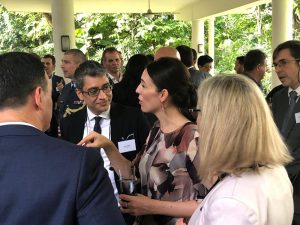 |
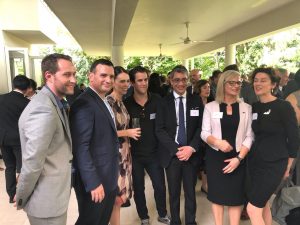 |
Commenting on the sidelines of Techweek, Amit Gupta gave his thoughts on the agreement, “Both New Zealand and Singapore are in hyper-innovation mode at the moment. With the advent of Blockchain and AI especially spurring the growth of the Fintech ecosystem in New Zealand, there is strong potential gains in engaging with the already thriving Singapore Fintech ecosystem.”
New Zealand and Singapore are not only model free markets, but also have been key proponents of data privacy over the years, an area that requires a serious look, as we start to apply new emerging technologies such as AI. “There is an opportunity for these two forward-looking nations to take it a step further to build an actionable Data Privacy Corridor to streamline the Fintech collaboration between them,” Gupta added. “With New Zealand being an export economy and Singapore, a strong services economy, this would enable a much more seamless collaboration between these two countries.”
The collaboration does not end at cybersecurity and Fintech. As part of the partnership, a joint work programme is being negotiated, starting with two flagship collaborations – an advanced data science research platform to build New Zealand’s data science capability; and a food and nutrition cooperative science programme with a focus on ‘future foods’. Both countries have different areas of expertise, and collaborative measures such as these, give them an opportunity to share best practices that will prove mutually beneficial.
The future of food, medicine, and digital technology has been marked as prime research targets to maintain Singapore’s competitiveness in the coming years. Recently, Singapore Government convened a panel discussion on the Research, Innovation and Enterprise (RIE) 2020 plan where Singapore’s Finance Minister Mr Heng Swee Keat delivered an update on Singapore’s science and technology research plan.
Mr. Heng conveyed that more than S$500 million is set-aside to shape up the artificial intelligence systems and to fulfill the nation’s cyber-security requirements. The fund will also improve Singapore’s supercomputing capabilities and the deployment of automation and robotics.
A further $144 million will be allocated towards food research to increase sustainable urban food production, and another $80 million will be contributed to the cell-therapy research in the biopharmaceutical sector.
How Singapore will benefit in terms of technology from this announcement?
The Government has clearly spent a lot of time to determine how to get Singaporean companies to invest in research that can benefit the country, and identifying areas that the industries can benefit in return.
Investment in Digital Technology
The Government believes that it is important to invest in the areas of Artificial Intelligence, Supercomputing and Robotics and hope that there will be more success stories for these industries. The S$500 million set aside will aim to increase the funding already set back in the RIE 2020 for the Digital Intelligence.
Speaking on the subject, Mervyn Cheah, Principal Advisor ,Ecosystm, says that “The Government aims to entice more Industry to invest in R&D in Singapore. PM Lee has mentioned that the industry today is investing just 1.2 to 1.4 of Singapore’s GDP in R&D in Singapore, and he wants the Industry to do more. It is a bit like playing roulette you place your bets on many numbers and hope that one of them will blossom and give you the returns and success. It is not possible that all R&D will come to fruition practically.”
Scenario for Businesses
The RIE 2020 is an initiative taken by the Singapore Government to make the nation a hub for R&D. By setting aside funds for both local industries and MNCs the government hopes that the industries will be able to invest and grow.
“There are a number of new start-ups being created as Singaporeans start to recognise that the government is putting in more R&D funding. At the same time, existing businesses will expand to take advantage of this announcement” says Cheah.
What to Expect – RIE2020
Currently, the local Industries in Singapore do not have a large appetite for investing in R&D in Singapore although there is a 50% spike from 2016 to 2018. The government’s aim is to invest in the Science, Engineering, and Biomedical fields industries, with the intent that they can increase their revenue.
Cheah says “the Government is looking at getting Multi-national Corporations (MNCs) to invest in Singapore for their R&D and believes that the industry can do better. So, the Government (National Research Foundation under the Prime Minister’s Office) is pushing the Industry to do more, and on their pro-active part, they have announced setting aside another S$700 million R&D funding to A*STAR, to the Singapore Food Agency, and other R&D agencies, with the hope that the Industries will further spend R&D in Singapore.”
As a health analyst, I have always considered myself lucky that Singapore has been home for the last 9 years, and I have been a witness to the national ehealth initiatives from close quarters. So, when I received the SMS informing me that my son’s name, NRIC (identification number), address, gender, race and birth date are floating around in the cyberspace somewhere it was disconcerting to say the least. True that his medical and financial information had not been breached, but that’s small consolation for someone who took for granted the sophistication of the health records system in Singapore.
A Quick Recap
SingHealth, Singapore’s largest group of healthcare institutions, announced in June 2018 that non-clinical personal data of 1.5 million patients had been “accessed and copied”. Outpatient prescriptions information of 160,000 patients were also compromised. There was no evidence of this breach going deeper into actual patients’ clinical records and the other 2 healthcare groups were not affected. The breach was detected a week later, a relatively short period, but it was not immediate. Security – identification and threat management – is one of the mainstays of any Digital Transformation journey, and Singapore healthcare is considered to be well along on that journey.
It is commonly believed that security breaches are waiting to happen, and that organisations are not concerned with ‘if’ but ‘when’. Moreover, the disparity of the devices used in healthcare makes security a difficult proposition. This will only become more complicated once IoT sensors and devices are used from outside the walls of hospitals. AI-driven breach detection is being portrayed as the hope for the near future.
Why does this continue to concern me, even after 5 months?
- A cautious approach to NEHR. One of the first statements that the government made in the wake of this disaster was that the government is reviewing the ongoing NEHR initiatives. Since then, the Cyber Security Agency (CSA), and PwC have been appointed to identify the weaknesses in the NEHR initiatives, with a view to address them. It is a good time to re-evaluate the possible weak links before going deeper into the program.
But, almost 10 years after the NEHR was launched the country has still not been able to realise the full potential of the initiative, especially because of limited participation from the private sector. Will this lead to a conservative approach to creating the ‘One Patient, One Record’? Will this put on the brakes to ongoing progress of the ehealth initiatives? - Private Participation in NEHR. The private sector accounts for 80% of Singapore’s primary care. It is possible for a citizen who has never stepped into a public polyclinic, choosing the friendly, neighbourhood GP instead, and has had no acute care needs (whether inpatient or outpatient) to not be on the NEHR system. And this would include chronic disease management, which is the primary cause of concern in sustainable healthcare. The Singapore Personal Data Protection Act 2012 (PDPA) law governs the collection, use and disclosure of personal data by all private organisations. The Act, that came into effect in 2014, states that organisations that fail to comply with PDPA may be fined up to $1 million and public reporting of the breach. However, the public sector is not included under the PDPA! So in effect the public healthcare consumers whose data was breached have no recourse under PDPA. But this might deter private healthcare providers with very rudimentary IT systems in place, who are liable under PDPA. The government has already been fighting a reluctance on the part of these private primary care providers to go digital with the patient records, and sharing them with the public system, with a view to build a more comprehensive NEHR.
- ‘Smart nations’ need ‘Smart’ citizens. This has been my mantra regarding Singapore’s Smart Nation initiatives for a while now. And smart citizens are not necessarily only those with access to multiple mobile devices and wireless connectivity. Smart citizens are also people who are aware of the pitfalls in the journey, and of their rights as they travel together with the government on the ride.
What shocked me was the singular lack of concern among the average Singaporean, when I tried to discuss the gravity of the health data breach – which is considered even more dangerous than financial data breaches in most mature countries. The common response I received was that its only personal data. Well, your national identification number, along with your date of birth, in the hands of nefarious agents can do a lot of mischief, I reminded them. And what about the prescription data, I persisted. That got answered by a view that prescription data is not really health data! A lot can be inferred from your prescription data… I persisted with no avail! Healthcare is moving toward giving autonomy and control of health records to individuals. To be able to leverage this control, individuals have to be a) concerned about their health and wellness parameters b) ready to record and share their health data with the right people at the right time, and c) aware that health data is private and needs to be kept secure.
There is no doubt in my mind that Singapore will do all within its capacity to avoid a breach of this level – and other industries are feeling the repercussions too. But the government definitely has to manage the private participation in NEHR more delicately and diligently, in light of this breach. They also have a long way to go in educating the citizens on the privacy and compliance angles to health data.


